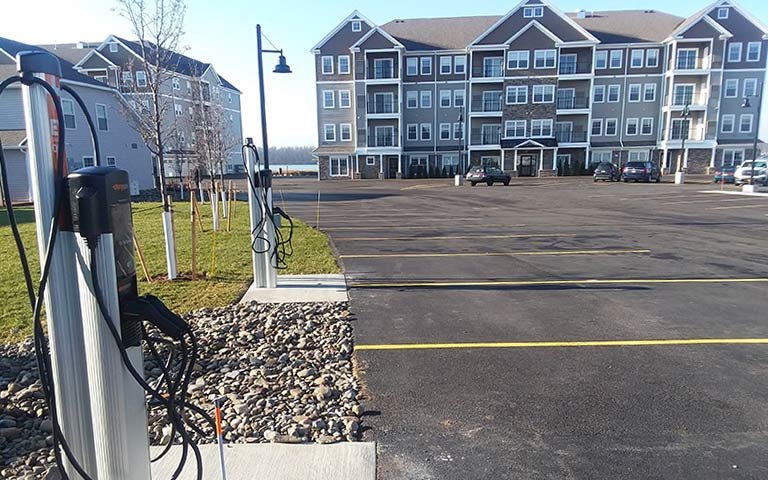Range and charging
Once plugged in, the electric car charges on its own just like a cellphone; no monitoring needed. When charging is done mainly at home, the battery is full every day. When travelling, EV drivers can rely on public charging networks. An increasing number of employers now provide charging stations at work.

Where to charge your vehicle
At home, there are two possible charging options: using the basic charging equipment provided with the new vehicle, in a 120V outlet, or purchasing a 240V charging station and having it installed by an electrician.
Access to charging stations at work encourages the acquisition of a plug-in vehicle, which is why the Québec Government – through Roulez vert program – offers financial assistance to companies wishing to make charging stations available for their employees.
For charging on the road, an EV driver plans breaks according to charging needs. A stop at a tourist destination, a meal break or a snack become opportunities to plug in. Public charging networks include three types of charging stations: 240V charging stations, DC fast charging stations (DCFC) and Tesla Superchargers.

Planning your Electric Car Trips
Electric vehicles (EVs) offer an environmentally-friendly alternative to traditional driving, but do require some adjustments to old habits. This guide explores the important aspects for efficient route planning when driving an EV.

Home charging station : purchase and installation
Choosing your home charging station is not complicated, but there are still a few things to know.
The same goes for the installation, a simple operation, comparable to the installation of a stove socket ... but which must be carried out by professionals.

Specifics of EV charging in condos / multi-units
Having your own charging station in a condo is quite possible. There are a few additional things to consider and installation costs vary widely with each building.
Multi-unit apartment buildings can also offer their residents shared charging stations in shared parking lots.

Financial support for a residential charging station (240V)
Several subsidy programs exist to encourage owners of electric cars to install their own residential charging station, regardless of the building.

Charging time and charging cost
Find out how much electricity costs to travel 20,000 km in an electric vehicle and compare with the cost of gasoline for the same distance. Also see the factors that influence the duration and speed of recharging.

Range optimizing
To maximize the number of kilometres travelled between charging sessions, EV drivers apply ecodriving principles, take advantage of energy recovery when braking and precondition their vehicle before a trip.

Seasonal variations of electric range
Electric autonomy may vary according to the season. It is essential to take this into account when choosing the right electric vehicle for you.
